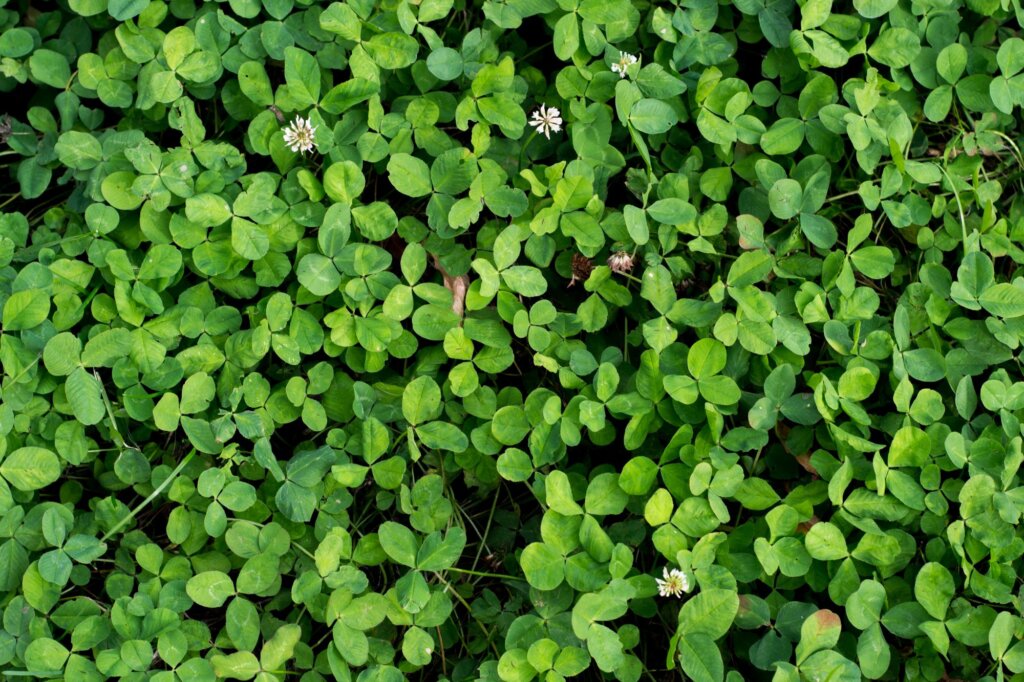A well-designed landscape includes more than just trees, shrubs, and flowers. What about what’s underfoot?
Ground cover plays a big role in both the look and functionality of your outdoor space by controlling weeds, retaining moisture, and reducing maintenance. But how do you choose the right one for your yard? Whether you’re looking for an alternative to grass or a decorative touch to complement your garden, ground covers can really change the look of your outdoor space.
Why Ground Cover Matters
Beyond aesthetics, ground cover serves several practical purposes. It helps prevent soil erosion, keeps weeds at a minimum, and can even reduce the need for watering and mowing. Unlike traditional grass lawns, many ground covers require minimal upkeep, which makes them an attractive option for busy homeowners or those looking to create a more sustainable landscape.

Popular Ground Cover Options
Choosing the best ground cover depends on your climate, sun exposure, and how much foot traffic the area receives. Some common options include:
1. Low-Growing Plants
If you love the idea of a plant-based ground cover, consider options like:
- Creeping Thyme – A fragrant, hardy option that thrives in full sun and requires little water.
- Clover – A lush alternative to grass that stays green year-round and enriches the soil with nitrogen.
- Sedum (Stonecrop) – A drought-tolerant succulent that adds texture and thrives in rocky or dry areas.
2. Mulch
Mulch is a great low-maintenance ground cover that helps retain moisture and suppress weeds. Common options include:
- Bark Mulch – A natural, organic choice that can improve soil health over time.
- Pine Needles – A great choice for acid-loving plants like azaleas and blueberries.
3. Decorative Rock & Gravel
If you prefer a sleek, low-maintenance landscape, rock and gravel might be the choice for you. They provide drainage and require virtually no upkeep. Popular options include:
- Pea Gravel – Small, smooth stones that create a natural, textured look for pathways and garden beds.
- Crushed Granite – A more refined option that compacts well, making it ideal for walkways.
- River Rock – Larger, rounded stones that add contrast and help with drainage in garden beds.
How to Choose the Right Ground Cover for Your Yard
When choosing a ground cover, observe your yard and consider the following factors:
- Sun & Shade Requirements – Some ground covers thrive in full sun, while others prefer shaded areas. Make sure to choose one that suits your yard’s conditions.
- Maintenance Needs – If you’re looking for a truly low-maintenance option, mulch or gravel might be your best bet. If you prefer greenery, go for a hardy, drought-tolerant plant.
- Aesthetic Appeal – Think about how the ground cover will complement the rest of your landscaping. Do you want a uniform look or a mix of textures and colors?
- Functionality – If the area gets heavy foot traffic, opt for something durable like clover, creeping thyme, or compact gravel.
Ground cover is an element of landscape that can provide both beauty and function. The choice you make can help reduce maintenance and add to your yard’s overall look. By using a ground cover that suits your climate, lifestyle, and aesthetic preferences, you can create an outdoor space that’s both beautiful and easy to maintain.
This article is meant for informational purposes only. If you have further questions, consult with a local landscaping professional.
